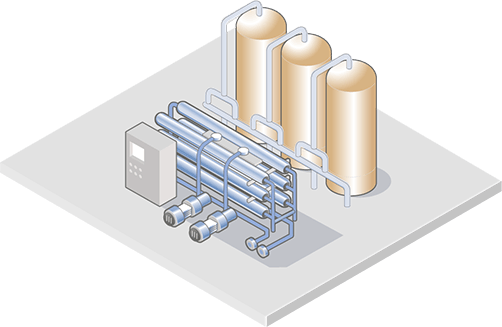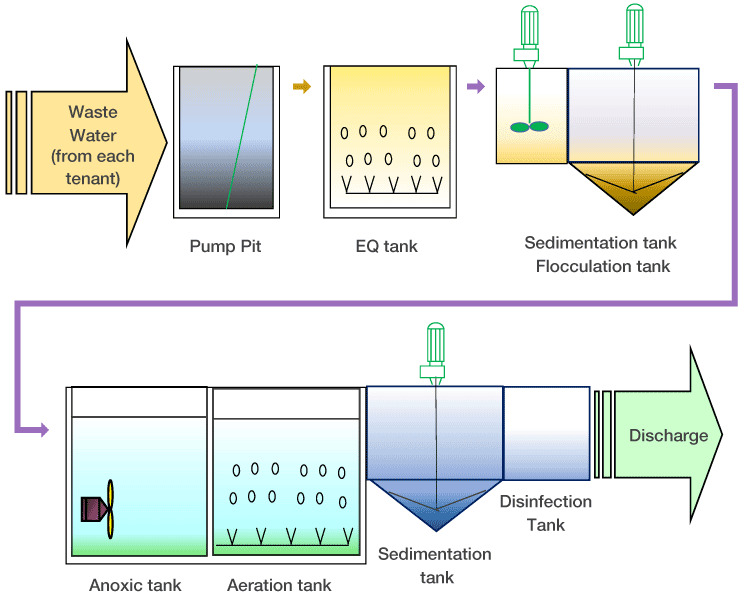Industrial Waste Water Treatment-- Improve Efficiency with Customized Water Treatment Solutions
Industrial Waste Water Treatment-- Improve Efficiency with Customized Water Treatment Solutions
Blog Article
Difficulties and Solutions in Industrial Waste Water Treatment
The treatment of commercial wastewater presents a complex array of obstacles, ranging from rigid governing compliance to the complexities of price monitoring and technological constraints. The irregularity in waste composition even more makes complex the performance of traditional treatment approaches, commonly causing escalated operational expenditures. Nonetheless, arising remedies such as advanced oxidation processes and innovative financing designs show pledge in resolving these issues. As industries grapple with the need for sustainable practices, the concern continues to be: what approaches will ultimately lead to a balance in between conformity, cost-efficiency, and ecological obligation?
Regulatory Compliance Obstacles
Exactly how can industrial centers navigate the complex landscape of governing compliance in wastewater therapy? The regulative framework controling wastewater management is diverse, typically varying by territory and type of sector. Facilities needs to adhere to government, state, and neighborhood policies that determine effluent high quality standards, discharge limitations, and monitoring needs. Failure to comply can lead to severe charges, including penalties and functional shutdowns.
To effectively handle these conformity challenges, centers ought to apply robust tracking and reporting systems that make certain real-time data collection and evaluation. Regular audits and danger analyses can identify prospective conformity gaps, permitting aggressive adjustments in treatment procedures. Staff member training programs concentrating on regulative understanding and ideal practices are necessary to foster a culture of compliance within the company.
Additionally, involving with regulatory companies can provide beneficial insights and make clear ambiguous guidelines. Facilities may also profit from consulting with ecological specialists who concentrate on wastewater treatment conformity, making sure that they remain abreast of advancing policies. By taking on these strategies, commercial centers can not only fulfill conformity requirements yet additionally enhance their functional effectiveness and environmental stewardship.
Expense and Financial Obstacles
Navigating regulative conformity in wastewater therapy commonly presents considerable monetary obstacles for industrial facilities. The costs related to implementing essential treatment innovations, preserving compliance with rigorous regulations, and handling functional expenditures can be discouraging. Many organizations deal with high preliminary resources expenditures for the construction or upgrading of wastewater treatment plants, which may strain budget plans, particularly for medium-sized and little ventures.
In addition, recurring functional prices, consisting of labor, chemical, and maintenance inputs, add to the economic worry. The changability of rising and fall power prices and the possible demand for added financial investments to satisfy progressing guidelines intensify these economic pressures. Oftentimes, the lack of monetary incentives or support from government bodies makes it a lot more tough for services to justify investments in sophisticated therapy systems.
Additionally, the financial stability of wastewater therapy services is often questioned, specifically for industries with limited earnings margins. As a result, it is vital for industrial facilities to explore cost-effective approaches, such as embracing innovative funding choices, engaging in partnerships, and leveraging emerging modern technologies that can assist mitigate these financial barriers while making certain conformity with environmental requirements.

Technological Limitations
Countless technical constraints prevent the efficiency of industrial wastewater treatment procedures. One substantial difficulty is the insufficiency of existing therapy innovations to address complex impurities. Lots of traditional methods, such as activated sludge and chemical rainfall, battle with the removal of emerging toxins, consisting of microplastics and pharmaceuticals. This constraint usually leads to the discharge of inadequately dealt with water, which can have harmful environmental influences.
Furthermore, the scalability of treatment innovations poses an obstacle. While some advanced approaches, like membrane purification or sophisticated oxidation, reveal guarantee in regulated environments, their application on a bigger scale can be technically tough and prohibitively costly. Maintenance and functional complexities additionally make complex the adoption of these systems, particularly for smaller sized industries with restricted technical know-how.
The combination of real-time surveillance technologies also stays not enough in lots of treatment centers. Without reliable monitoring systems, operators can not adequately evaluate treatment effectiveness or identify prospective failings, bring about inconsistent effluent quality. As a result, attending to these technical constraints through research and advancement, together with financial investment in cutting-edge remedies, is crucial for enhancing the efficacy of industrial wastewater treatment and making certain governing conformity. Industrial Waste Water Treatment.
Irregularity in Waste Make-up
In the realm of industrial wastewater therapy, the irregularity in waste structure provides a powerful difficulty. Industries generate wastewater with varied features, affected by elements such as production processes, resources, and operational practices. This diversification makes complex the treatment process, as conventional systems frequently struggle to properly resolve the wide variety of contaminants present.
For example, wastewater from food processing may have high levels of raw material, while effluents from chemical production could consist of hefty steels and dangerous substances. This difference necessitates versatile treatment approaches to make certain compliance with environmental guidelines and shield public health and wellness. Additionally, changes in waste composition can happen over time, affected by modifications in production routines, maintenance activities, or the intro of new items.

Cutting-edge Treatment Solutions
Ingenious treatment options are important for resolving the complexities of industrial wastewater management. Standard methods commonly fall short in properly eliminating a vast range of contaminants, especially in centers with diverse effluent streams. Current advancements focus on incorporating cutting-edge innovations to boost treatment performance and sustainability.
One promising method is the usage of advanced oxidation processes (AOPs), which take advantage of effective oxidants to degrade organic pollutants. AOPs, including photocatalysis and ozonation, can substantially lower toxic compounds and enhance effluent top quality. In addition, membrane bioreactor (MBR) innovation has actually obtained traction, incorporating organic treatment with membrane filtering, resulting in high-grade effluent and reduced footprint.
One more ingenious option is the execution of source recuperation systems. Strategies like anaerobic digestion not only treat wastewater however likewise create biogas, which can be taken advantage of as an eco-friendly power resource. In addition, the fostering of synthetic intelligence and device knowing designs can enhance treatment processes by predicting that site variants in wastewater have a peek at this site make-up, therefore boosting functional performance.
These innovative remedies not just address governing conformity however also advertise environmental sustainability, paving the means for a much more durable and effective industrial ecological community.
Verdict
In final thought, dealing with the challenges of commercial wastewater therapy calls for a diverse technique that integrates regulatory conformity, expense management, and technical improvements. Cutting-edge remedies, such as innovative oxidation procedures and membrane bioreactor technology, deal pathways to boost treatment performance. Furthermore, real-time monitoring systems and joint interaction with regulative agencies can promote sustainable techniques while alleviating economic stress. A commitment to continual enhancement in therapy approaches will eventually add to the effective administration of commercial wastewater and environmental management.
The therapy of commercial wastewater offers a complex selection of challenges, varying from stringent regulatory compliance to the complexities of expense administration and technological restrictions. Industrial Waste Water Treatment.Navigating regulatory compliance in wastewater treatment commonly offers considerable monetary difficulties for industrial facilities. Dealing with these technological limitations through research and development, along with financial investment in ingenious options, is vital for improving the effectiveness of industrial wastewater treatment and making sure regulative compliance
Wastewater treatment centers need to invest in robust surveillance systems and versatile treatment innovations capable of accommodating differing influent attributes.In conclusion, addressing the obstacles of industrial wastewater treatment calls for a multifaceted method that incorporates governing compliance, expense monitoring, and technological innovations.
Report this page